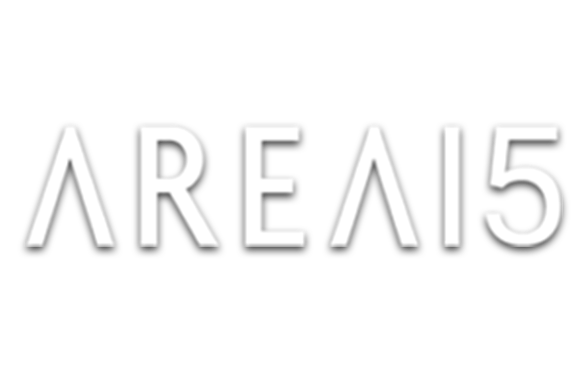In the world of architectural wonders, few structures captivate the imagination quite like domes. These structures have gained significant attention for their ability to merge art, technology, and imagination. In this blog, we embark on a journey to discover the various types of domes and delve into the immersive world of projection mapping on various dome structures.
World's Largest Inflatable Projection Dome: The Dome Miami by Lumen and Forge
Types of Domes Through History
Throughout history, domes have been used by various civilizations as architectural marvels. From the ancient civilizations of Mesopotamia and Egypt to the classical civilizations of Greece and Rome, domes have played a prominent role in religious, cultural, and civic architecture. The evolution of dome architecture can be traced through different styles and techniques.
Ancient domes were built out of mud or stone, and they were used to create monolithic structures like huts and tombs. However, advancements in dome construction spurred new research into technologies for building domes using a wide range of materials, including wrought iron and steel.
The use of these materials made dramatic effects with lightness and construction. It also enabled researchers to get more experimental with their designs, all while achieving what was needed durability-wise. This eventually led to the invention of various dome structures, such as geodesic domes, onion domes, ribbed domes, etc.
Looking up into the Pantheon Dome in Rome
Render of a dome theatre by Lumen and Forge
Different Types of Domes Designs
Corbal Domes: Corbel domes, also known as false domes, feature a construction method where successive layers of masonry gradually converge to form a dome shape. This technique showcases the innovative use of corbelled arches to create domed structures. While not as structurally robust as true domes, corbel domes exhibit a distinctive aesthetic appeal and reflect the architectural ingenuity of ancient civilizations.
Cable Net Domes: Cable net domes represent a cutting-edge approach to architectural design, utilizing tensioned cables to support lightweight structures. These innovative domes offer a combination of strength and flexibility, allowing for striking designs and large open spaces without the need for internal support. Cable net domes are ideal for a wide range of applications, from sports arenas and exhibition halls to entertainment venues and cultural centers.
Geodesic Domes: Geodesic domes are captivating architectural marvels, distinguished by their curved triangular panels that create a spherical or partially spherical shape. Designed by Buckminster Fuller in the mid-20th century, they offer exceptional strength and stability while utilizing minimal materials. These structures distribute stress evenly, making them resistant to high winds, earthquakes, and heavy snow loads. Geodesic domes come in various types, differing based on the materials used for construction; while some are crafted from galvanized steel frames, others utilize timber or PVC piping.
Onion Domes: Originating in Eastern Europe, onion dome types are characterized by their distinctive bulbous shape topped with a pointed spire or cross. These domes often adorn religious structures such as Orthodox churches and mosques, symbolizing spiritual ascent and divine connection. Onion domes showcase intricate architectural details, featuring vibrant colors, ornate patterns, and decorative elements like stars and crosses.
Inflatable Domes: Inflatable domes are an air-supported structure that uses pumped air from outside to hold themselves up. They represent a modern innovation in architectural design, offering versatility and portability for various applications. Inflatable domes come in different sizes, but they are particularly handy for temporary events, pop-up installations, and temporary shelters. With their flexibility and ease of installation, inflatable domes provide a practical solution for creating immersive environments indoors or outdoors.
Ribbed Domes: Originating in Eastern Europe, onion dome types are characterized by their distinctive bulbous shape topped with a pointed spire or cross. These domes often adorn religious structures such as Orthodox churches and mosques, symbolizing spiritual ascent and divine connection. Onion domes showcase intricate architectural details, featuring vibrant colors, ornate patterns, and decorative elements like stars and crosses.
360 Presentation in an Immersive Dome
Projection Mapping Grid at a Tradeshow
Front of House at the Atlanta Dome
Projection Mapping on Dome Structures
Dome projection mapping involves projecting images or videos onto the curved surface of the dome, creating immersive and interactive visual experiences. The structure enables a 360-degree viewing experience — digital images are projected across the entire space to give viewers the feeling that they are somewhere else entirely.
In other words, projection mapping techniques enable artists and designers to transform domes into dynamic canvases, bringing architectural structures to life with captivating visuals and animations.
As projection spaces, geodesic structures offer a captivating and immersive experience. The spherical shape provides a unique canvas for projecting visual content. Therefore, creating a wrap-around environment that surrounds viewers with stunning visuals. The curvature of the dome eliminates distortion and enhances the viewing angles, allowing for an exceptional sense of immersion. The versatility of geodesic domes as projection surfaces enables interactive and engaging visual displays that captivate audiences.
Applications of Projection Mapping on Domes
The practicality and customization of dome designs enhance the immersive capabilities. While it is mainly used for entertainment purposes, the potential uses are virtually limitless. From transporting viewers to breathtaking landscapes to facilitating educational and governmental applications, projection domes offer an unparalleled experience for diverse audiences.
The digital dome structures enhance learning by projecting educational content for immersive experiences, covering subjects like history, science, and nature. In the corporate world, they enable immersive product demos, virtual showrooms, and architectural visualizations. Governments and public sectors can use them for public campaigns, urban planning showcases, and data visualizations. They are also valuable in military and astronaut training for simulations, strategic planning, and command centers.
World's Largest Projection Dome
World's Largest Inflatable Projection Dome at the Atlanta Super Bowl
Geodesic Domes for Marketing
Popular Dome Types Used in Projection
Modern dome structures are an innovative way to host your next event. These domes can vary in size and do not require inner support columns. This makes them a simple solution that takes up little space in comparison with traditional buildings. As an event venue, the dome that is rented can be of any size required to accommodate the correct capacity of people. The main differences in domes used for dome projection are capacity and permanence.
A 360-degree dome projection theater is one of the latest technologies that makes the most out of this structure. Domes lend themselves to a multitude of purposes. Let’s take a closer look at two distinct projection domes: geodesic and inflatable domes.
Geodesic domes: The spherical shape provides a unique canvas for projection mapping, creating a wrap-around environment that surrounds viewers with stunning visuals. The curvature of the dome eliminates distortion and enhances the viewing angles, allowing for an exceptional sense of immersion. The versatility of geodesic domes as projection surfaces enables interactive and engaging 360-degree visual displays that captivate audiences.
Inflatable Domes: Inflatable domes make perfect projection domes as they can provide the illusion of limitless space. The interior of the dome can be lined with a membrane-like fabric that provides incredibly detailed imagery. With this, you can transport audiences entirely. These types of domes are an instant gathering place for any number of people. They are perfect for temporary space and excellent for any event that needs to be given an extra wow factor
Examples of Dome Projection Mapping
The Dome, Miami - World's Largest Projection Dome
Lumen & Forge was tasked by AG Entertainment to create the world’s largest projection dome in downtown Miami, housing an immersive nightclub experience. With performances from renowned artists, the dome welcomed over 60,000 attendees into a visually stunning virtual world.
Over three days, Lumen & Forge handled design, construction, AV setup, and content production, including custom 4K Domemaster visuals. Despite the unique pill-shaped structure of the 225 x 175 feet dome, we seamlessly projected visuals across the dome’s massive 40,000 sq ft screen space using advanced technology and careful calibration.
The immersive projections transport guests to another world, adding an enchanting element to the gathering. Moreover, the versatility of inflatable domes is apparent in their ability to accommodate any number of people, making them an instant gathering place that can cater to diverse event sizes and layouts.
Projection mapping in an inflatable dome provides an unmatched ambience
Wrap UP
Domes stand as timeless symbols of architectural innovation and cultural significance, offering a canvas for projection mapping to create immersive and transformative experiences. Whether it’s the geometric precision of geodesic domes or the intricate beauty of onion domes, each type of dome offers unique opportunities for projection mapping. As technology continues to evolve, projection mapping on domes will continue to push the boundaries of creativity and imagination, captivating audiences around the world with its mesmerizing visuals and immersive storytelling. If you have any questions about which type of dome would be best for your needs,
contact us today to learn more about what we can do for you and your next event.










































